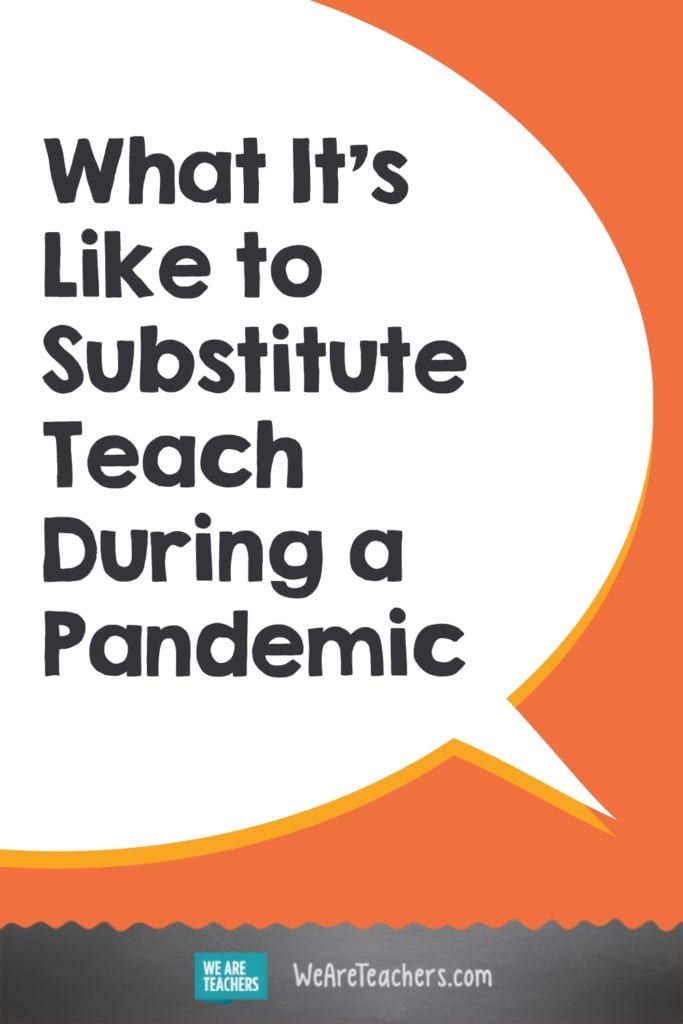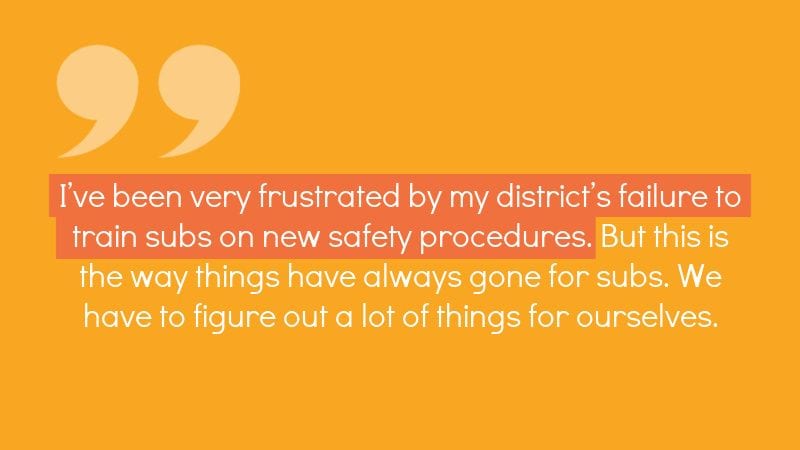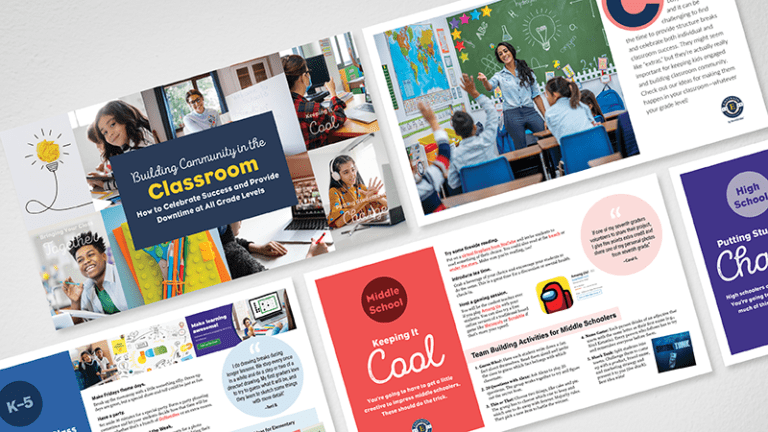In an already difficult school year, many schools are facing one more serious issue: a shortage of substitute teachers. Teachers who need to stay home, whether because they’re sick themselves or need to quarantine due to exposure, might find there’s no one available to substitute teach during COVID. Many long-time subs have opted out this year, for a variety of reasons. Lots of them are retired teachers themselves, and their age puts them at higher risk. Others are supervising their own children as they learn at home, or have health conditions or personal reasons keeping them off the rosters.
But not all subs are staying home. We caught up with an elementary school sub who works for a suburban school district in the Midwest. She shared her thoughts on what it’s like to substitute teach during COVID, including how things have changed and why she thinks administrators should give subs more public recognition for their efforts.
What brought you to substitute teaching initially?
I have been subbing for over ten years. It started as a way to get out of the house every once in a while and make a little money when my own kids were little. I have a degree in education but my full-time teaching license is expired. Now that my own kids are older and in school themselves, it’s a good flexible source of income for our family. I can work nearly full-time but still have the flexibility to take off as needed for my family’s needs. I enjoy working with kids, and I have enjoyed getting to know many teachers and school staff. As an elementary sub, I work in three buildings, and the highest age I sub for is 6th grade.
What made you decide to keep subbing during the 2020-21 school year?
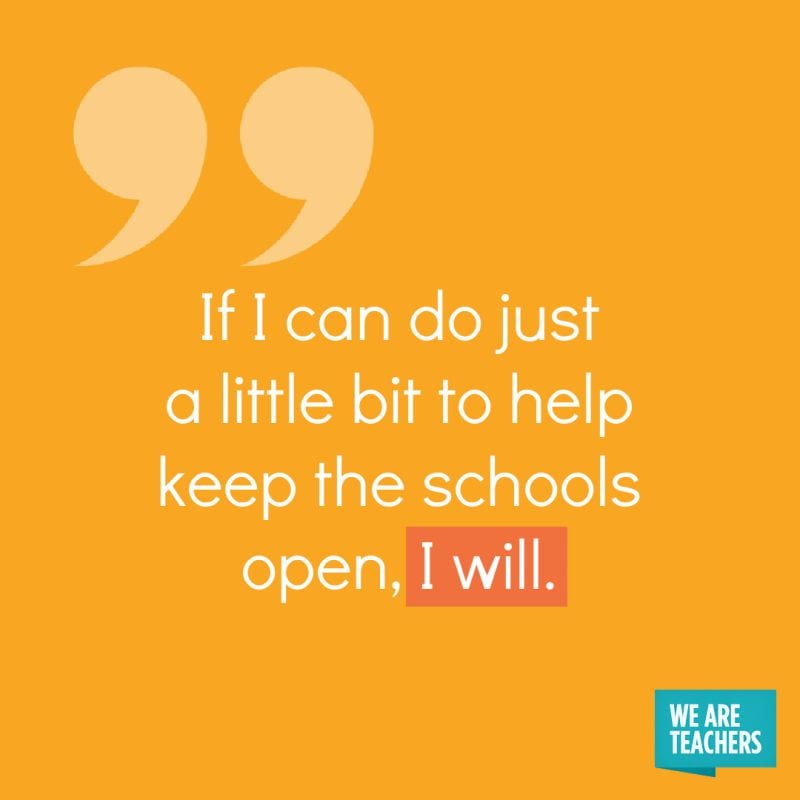
My own children are in face-to-face learning this year, a decision we made as a family looking at their best interests. We are a generally healthy family with little risk. I do know of some long-time subs who decided to sit this year out, primarily retired teachers who have a higher risk factor. Additionally, I personally strongly believe that the classroom is the best—and safest!—place for most students right now, as long as schools take appropriate precautions.
Every time I go to work, I remember that that is one more day our district can remain open. Administrators in my district have said that a lack of available subs for teachers and bus drivers would be a main consideration in deciding to go remote for any length of time. If I can do just a little bit to help keep the schools open, I will.
What’s been the biggest change for subs during COVID?
Subbing got off to a slow start this year for me personally. Case numbers were quite low in our area in August and September. Teachers were trying not to take personal days and schools were not scheduling the usual professional development or meetings that need multiple subs. So there wasn’t as much of a need.
But once cases began to rise (October in my area), a significant sub shortage began. I have been very busy since October and I expect that to continue in January. Additionally, there are many more multiple-day subbing opportunities available, as teachers move in and out of quarantine or are just being cautious. Schools like to keep one sub in a classroom for multiple days if at all possible.
What are the major changes you notice in schools in general, aside from masks and social distancing?
Because our district also offered an online option, most classes at the elementary level are a little bit smaller than they would be otherwise. Teachers need to keep a close watch for contact tracing purposes, so as a sub I am provided with a seating chart almost 100% of the time, which is of course a big help.
Our district is also doing a LOT of cleaning. For 3rd grade and up there’s usually a mid-day switch, which means it’s time for teachers to clean the desks with spray cleaner. A contracted company spends the day cleaning high-touch areas and comes to spray desks again during recess.
The playgrounds are divided into sections and each class plays on a designated section each day, so they are only interacting with their own class yet multiple classes can have recess at the same time. Students have assigned, socially-distanced lunch seats, so fewer students can be in the lunchroom at once. This leads to some earlier and later lunchtimes than normal. (My own son eats lunch at 10:30!) The kids have generally adapted to this easily, however. Kids are so resilient.
Has your district provided any special support or benefits for those who substitute teach during COVID?
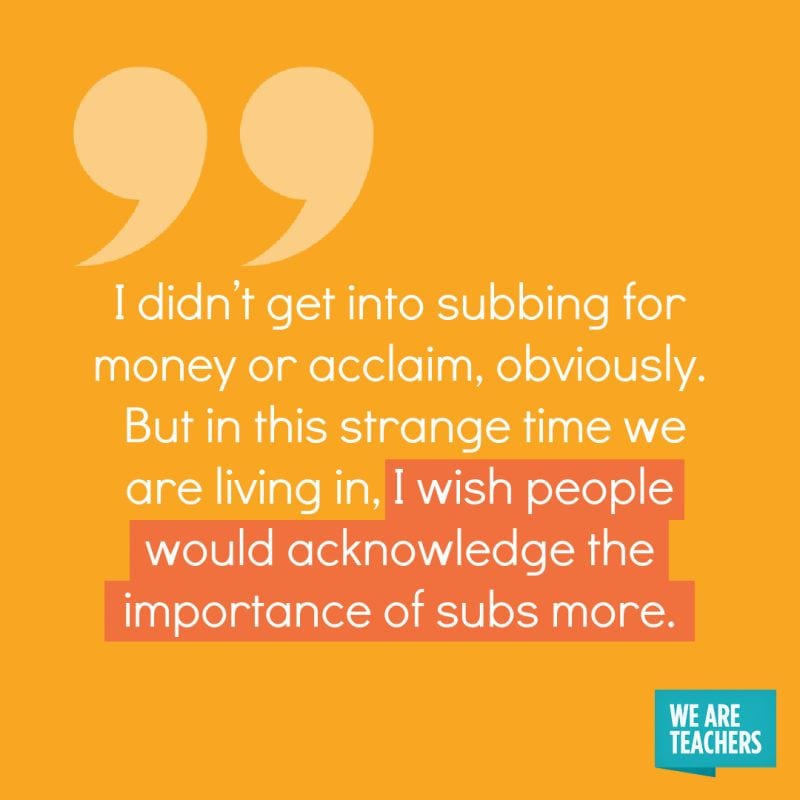
Our district has not really done anything, to my knowledge. Some districts in our area have increased substitute pay, but as everyone knows, subs have been underpaid for quite some time. Many districts in our state are struggling financially due to additional COVID-related expenses AND cuts to the education budget by our governor. So even if administration wanted to increase our pay, I doubt the money is there.
I’ve been very frustrated by my district’s failure to train subs on new safety procedures. There are no written or online materials or training. Instead, they primarily left it all up to already-busy secretaries and teachers to explain new procedures as needed. I learned how to clean desks from other teachers (and no two teachers explain it the same way!). I figured out on my own that there were new procedures for sending students to the nurse.
And no one tells me about cases in the buildings I work in—I only hear about positive cases in my own children’s buildings as a parent. But in general, this is the way things have always gone for subs. We have to figure out a lot of things for ourselves.
What is your district doing to overcome the current substitute teacher shortage?
Some building principals have sent emails to all parents encouraging anyone qualified to apply to substitute teach during COVID. Plus, I’ve seen posts on the district’s social media. In our state, to sub for teachers, you must have a bachelor’s degree in any field, but without a bachelor’s degree, you can still apply to be a sub for a classified position (aide, cafeteria, secretary, etc.).
If you’re considering subbing, and you’re comfortable with the possible health risks, this is a great time to give it a try. It’s a nice option for flexible work and income, but it really isn’t for everyone. You’ll do best if you have some experience with kids who aren’t your own, like coaching or working with Scouts. Be flexible, and ask questions of other teachers if you need to. (I find teachers are almost always more than happy to help!)
I can personally share that elementary school subbing is a lot of work. Most days I come home pretty tired. Elementary teachers in my district leave material they expect to be taught, so it is important to familiarize yourself with the curriculum (especially math). Most districts let you choose which ages you’re willing to cover, so if you find elementary school isn’t your thing, try middle or high school.
Do you think people appreciate the risks and efforts of subs right now?
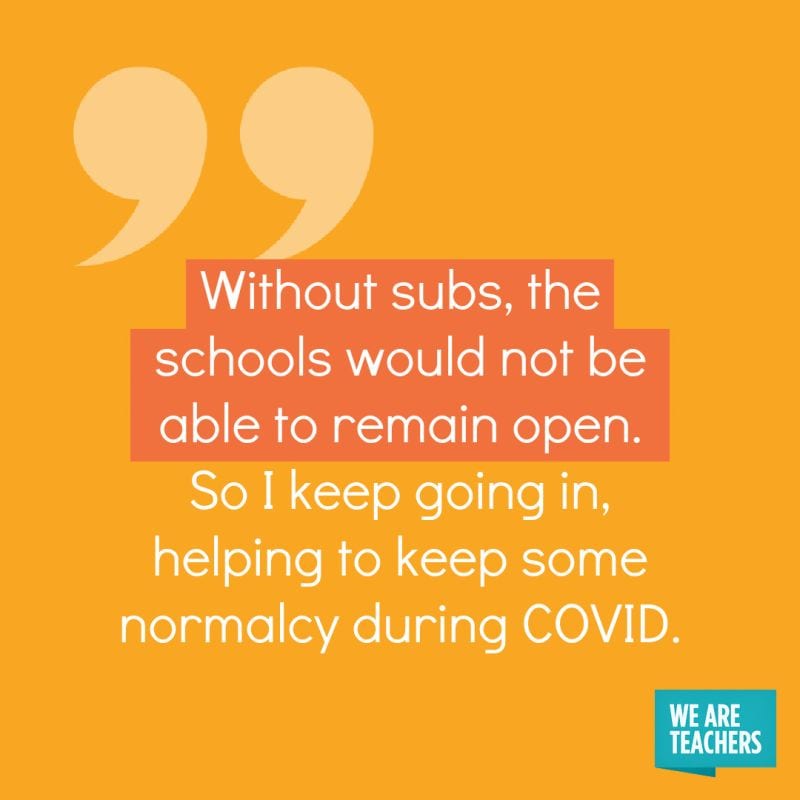
I didn’t get into subbing for money or acclaim, obviously. But in this strange time we are living in, I wish people would acknowledge the importance of subs more. I find that the teachers and building-level administrators are extremely grateful and appreciative of subs. They like seeing me there and they know I know what I am doing. And students generally respect and like me too. That hasn’t changed in these COVID times.
However, I think school boards and central office administrators often forget we are there. At a recent online school board meeting, a board member spoke about how grateful she was that teachers, administrators, and staff had worked so hard to keep the schools open all semester. Yet she did not mention subs at all, and without subs, the schools would not be able to remain open.
I enjoy the kids, and I miss seeing their mask-covered smiles. But I am glad that they can be there with their friends, learning and growing each day. So I keep going in, helping to keep some normalcy during COVID.
What are your thoughts on what it’s like to substitute teach during COVID? Share in the comments below.
Want more articles like this? Subscribe to our newsletters!
Plus, Learn the Art and Science of Getting and Keeping Substitute Teachers.
